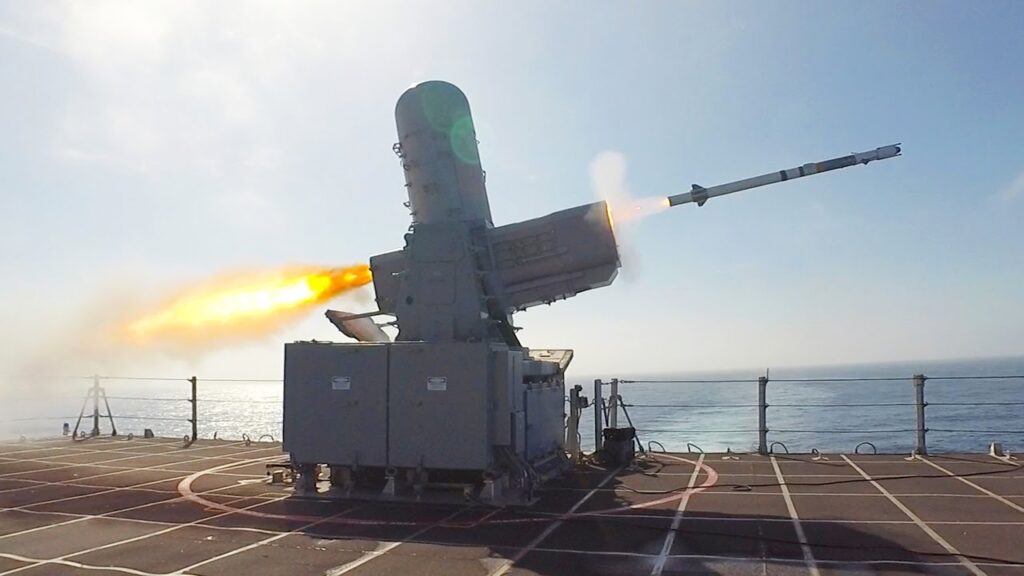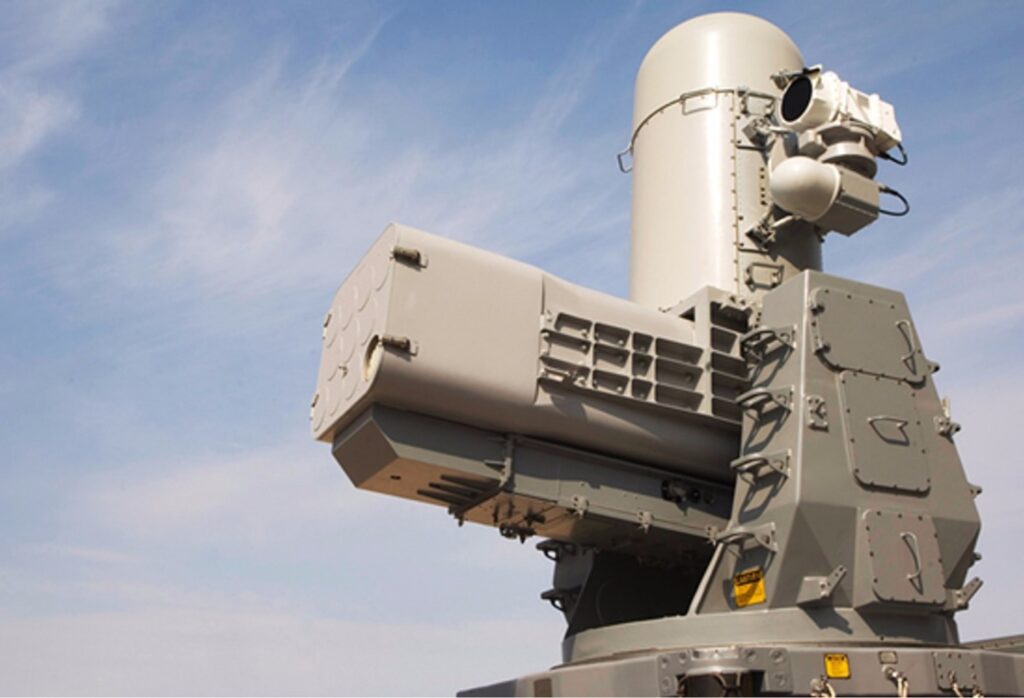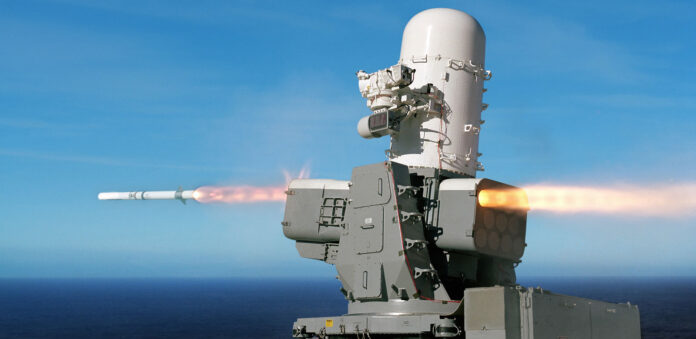The U.S. Navy is modernizing and extending its ship defense capabilities in response to emerging threats to its ships, including air- and surface-launched missiles and drone aircraft. For instance, on March 4, 2016, a test aboard the USS Porter, a guided-missile destroyer based in Rota, Spain, demonstrated a new protection method by combining Raytheon’s Block 2 Rolling Airframe Missile with a launch and tracking system called SeaRAM. The trials concluded with a successful live-fire test using a SeaRAM missile system.
Helicopter, Aircraft, and Surface (HAS) capabilities
SeaRAM is a development of the 1980s MK15 Phalanx close-in weapon system (CIWS). It is a low-cost spiral evolution of the established Phalanx Block 1B and RAM systems, the latter of which was developed in collaboration with Raytheon and Germany’s RAMSYS. SeaRAM is designed to increase the Phalanx’s keep-out range against sea-skimming anti-ship missiles by replacing the M61A1 20 mm cannon with an 11-round RAM missile guidance. Additionally, SeaRAM will likely be the first time the U.S. Navy deploys the RAM Block 1A Helicopter, Aircraft, and Surface (HAS) capabilities.

High-performance against supersonic and subsonic threats
It is intended to enhance ship self-defense and maintain a more extended keep-out range in adverse combat scenarios. It enables naval vessels to combat high-performance, supersonic and subsonic threats efficiently, such as sea-skimming, anti-ship missiles, oncoming vessels traveling at high speeds, rotary, fixed-wing aircraft, helicopters, and other surface targets. SeaRAM also provides a self-contained ship defense capability, combining the proven multi-spectral sensors of Phalanx with the RAM missile’s proved lethality.
The low-risk SeaRAM anti-ship weapon system is designed to provide better protection for marines and ships in terms of design and characteristics. The system utilizes the same above-deck system and mechanical components as the Phalanx CIWS and requires only minor shipboard modifications. The weight of the above-deck system is 16,901lb. Additionally, the SeaRAM close-range protection weapon system is equipped with the most advanced rolling airframe missile guided-missile weapon system on the market.

RAM guided missile
RAM provides superior accuracy, extended range, and high maneuverability. Additionally, the SeaRAM self-contained system utilizes the high-resolution search and track radar and electro-optical sensor suite from the Phalanx Block 1B CIWS, which provides the rolling airframe missile or RAM missile with reliable radio frequency, infrared detection, and tracking capabilities to defeat both air and surface threats. RAM missiles are available in three variants: RAM Block 1, RAM Block 1A, and RAM Block 2.
The Block 1 platform presents a better image-scanning seeker with autonomous infrared all-the-way guiding, while the Block 1A platform features enhanced signal processing capabilities. RAM Block 2 variant features a larger rocket motor, a more sophisticated control section, and an enhanced radio frequency receiver. The SeaRAM combines the Phalanx CIWS Mk-15 Block 1B’s radar and electro-optical system with an 11-cell RAM launcher to create an autonomous system that does not require external track information to engage threats. SeaRAM, like the Phalanx, can be installed on any ship.
The Advantages of SeaRam
SeaRAM is an exact weapon. Other missiles, such as the Evolved SeaSparrow Missile, or ESSM, have more excellent maneuverability. Accuracy, on the other hand, is about more than missile agility. RAM employs a tri-mode seeker that combines two different sensors. It is equipped with an infrared seeker and a radio frequency seeker/link of its own. In addition, the SeaRAM incorporates mount sensors that constantly update the missile with both a very high-resolution radar and the Block I.B.’s I.R. and optical assistance.
Additionally, RAM’s IR. seeker makes it very effective against stealthy non-emitting anti-ship missiles. If the incoming missile emits active radar, as the great majority do, RAM will home on the missile visually and via emissions using its infrared and radio frequency seekers. On the other hand, in an active jamming environment, the RAM can precisely guide the oncoming missile using only its R.F. seeker.

The SeaRAM and its launcher sensors make these advantages two-fold. RAM’s latest version, the Block II incorporates a new rocket motor with a more powerful/longer thrust and a 4-axis actuator. It’s a steerable bullet with thrust vectoring. Block II is infinitely more maneuverable than the original Block 0 and Block I missile, which had the propulsion section of the AIM-9 Sidewinder. The 4-axis actuator allows for pinpoint and lightning-fast adjustments. Block II’s have a very high percentage of ‘skin on skin’ intercepts against even supersonic foes. Block II has an unrivaled record in testing on subsonic and supersonic targets.
The SeaRAM and its launching sensors amplify these advantages. RAM’s most recent iteration, the Block II, contains a new rocket motor with increased thrust and endurance and a four-axis actuator. It is a steerable bullet with vectored thrust. The Block II missile is infinitely more maneuverable than the original Block 0 and Block I missiles, which used the AIM-9 Sidewinder’s propulsion unit. The four-axis actuator enables precise, lightning-fast adjustments. Block II’s have a high rate of skin on skin’ intercepts, even against supersonic adversaries. Block II has an unrivaled record in testing on subsonic and supersonic targets. SeaRAM is the best defense solution against supersonic and subsonic missiles.
Check out Naval Library App to find out the specifications of SeaRAM.





